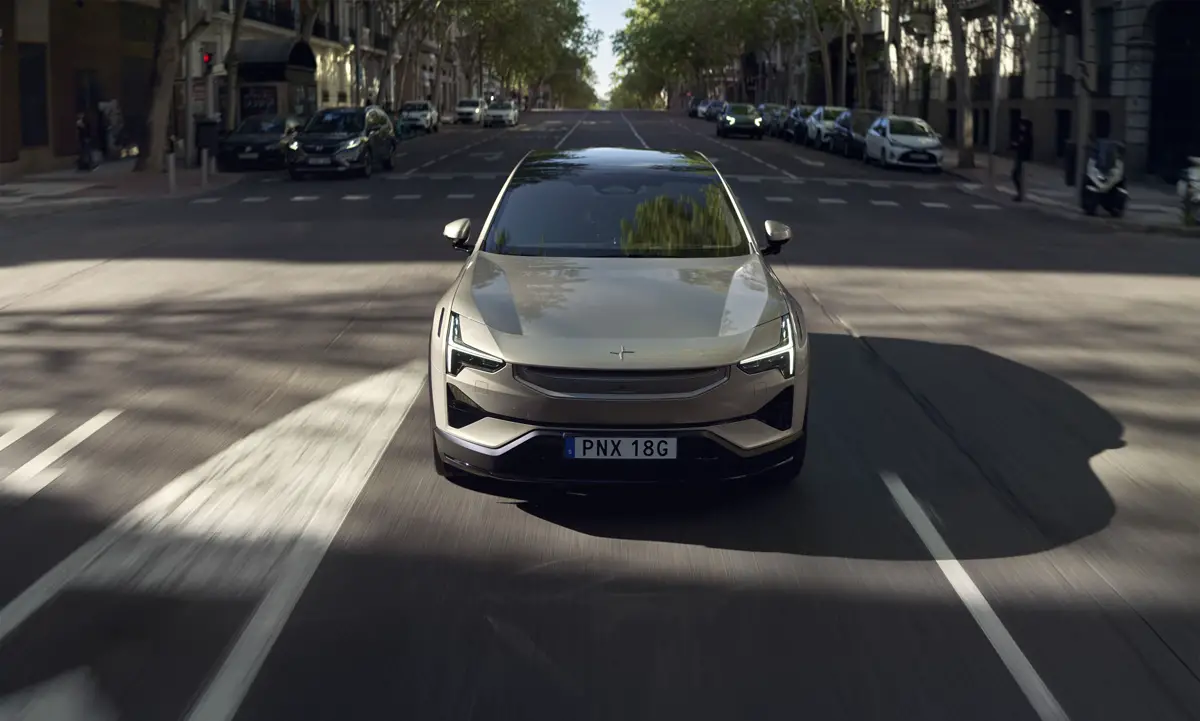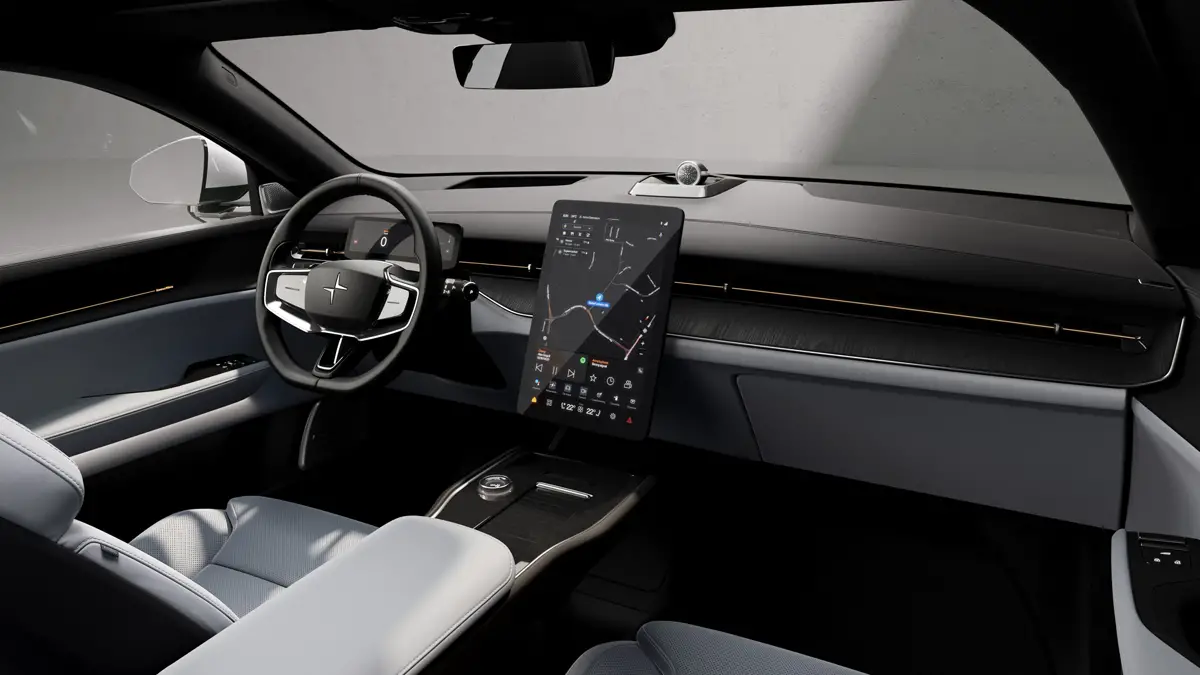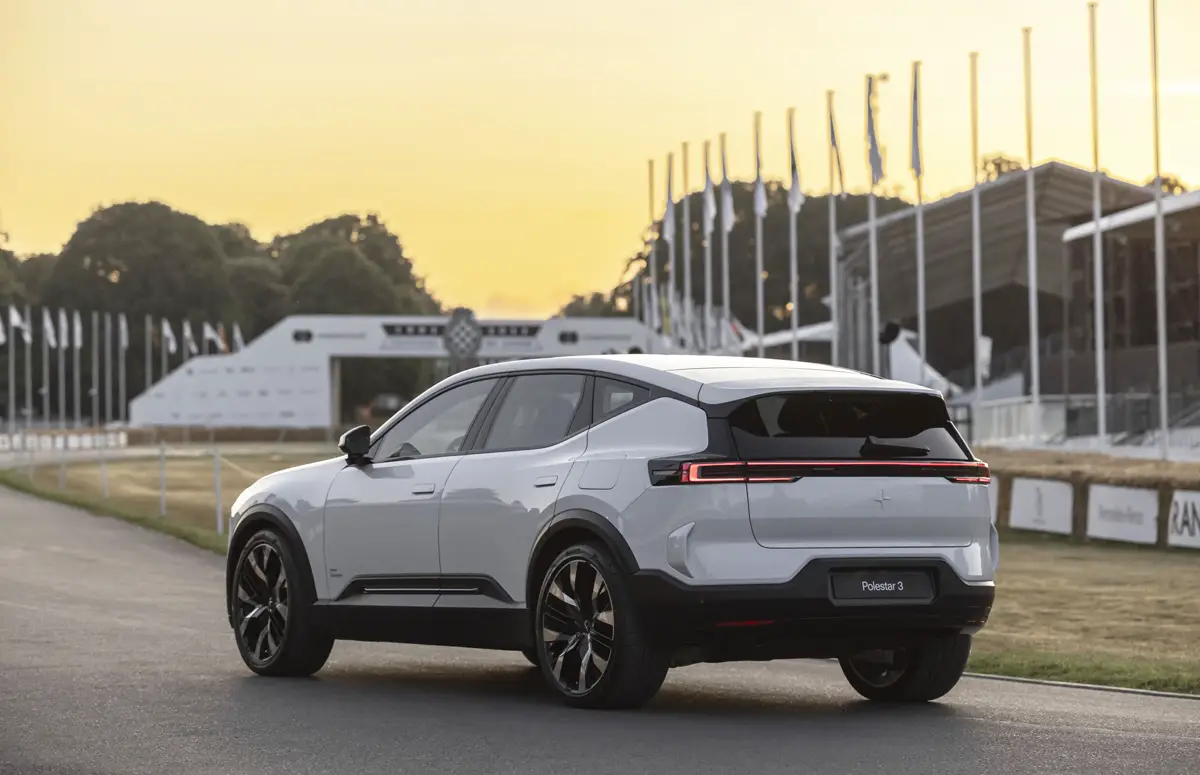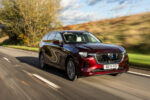Polestar 3 – Review
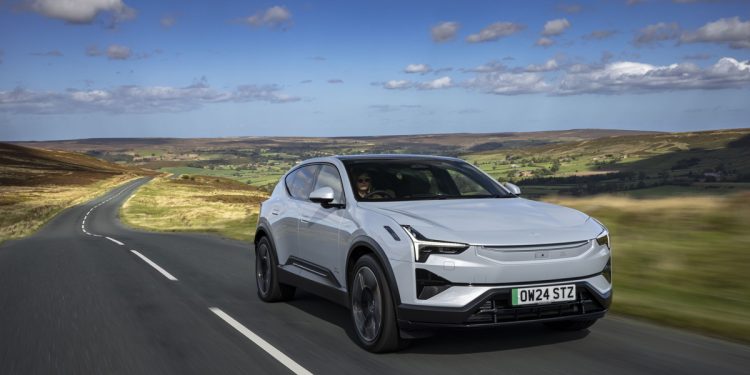
By Liam Bird, May 2025
Another week, another all-electric SUV – so goes the course of the modern motoring writer. Needless to say, there are certain all-electric SUVs that are significantly better than others, and there are some you’d be inclined to say are in a different league altogether.
After having had a brief drive of Polestar’s 3 late last year around Bicester – such occasions rarely tell you all you’d like or need to know – I was more than keen to spend more time with one. Fortunately for me, Polestar’s PR people are very obliging…
Now, if you’re not familiar with Polestar, allow me a paragraph to explain. Polestar and Volvo go way back. Polestar was once (in a manner of speaking) to Volvo what AMG is to Mercedes-Benz, and what M Division is to BMW. It started life as Volvo’s go-to company for all things motorsport (Swedish touring cars, predominantly), before becoming the performance badge for Volvo cars. Polestars, in my experience, were usually stiffly sprung and more often than not painted Swedish blue.
Today, Polestar is a standalone car maker in its own right, albeit still under the umbrella of Volvo and its Chinese owner, Geely. Simply put, these days Polestar is Volvo’s electric car brand – hence perhaps that somewhat familiar styling and those piercing Thor’s Hammer LED headlamps.
Build quality, as you might expect, is excellent: tight shut lines, deep lustrous paintwork, and neat detailing such as frameless door mirrors. In certain cases, gold seatbelts and stitching match the colour of the brake callipers and valve caps. Like I said – details.
“Eco-friendly bias”
The doors shut with a lovely, well-engineered and solid-sounding thunk. The indicator stalks are nice and chunky, and the seats too are brilliantly supportive. Why can’t every car manufacturer make seats as comfy as Volvo… sorry! I meant Polestar… can?
As per the door cards, the seats in the 3 Polestar lent me were covered in charcoal-coloured animal welfare wool, while the brightwork was made from repurposed aluminium. Polestar are very keen that you notice their use of reclaimed and recycled materials: plastics are recycled PET and Econyl sourced from old plastic bottles, and there’s even ‘welfare-secured’ Nappa leather available from Bridge of Weir, should you want such things.
The overall feel of the cabin is one of minimalist Scandi-chic with an eco-friendly bias, and it’s all bathed in light thanks to a standard-fit (on my car at least) panoramic and UV-filtering sunroof.
However, it’s not entirely perfect.
In their quest to simplify everything – to pare things down to the absolute minimum component-wise – one could argue Polestar haven’t been entirely successful. Even the “ignition” key/card is buttonless: the Polestar 3 unlocks itself as you approach it.
Or at least, it’s meant to. Most of the time it does. However, both I and the delivery driver struggled to unlock the doors on more than one occasion. I also got stuck outside on a particularly chilly day, frantically waving a key card near the door handle in a bid to warm myself in the heated seats. I never quite fathomed how the Polestar 3’s keyless entry system and its unlock-on-approach function is meant to work.
“Unnecessarily complicated”
Once inside, you quickly begin to notice what else feels as if it’s missing. There’s no starter button, no handbrake, no obvious buttons to adjust the mirrors. Even the electric window switches have been pared down to just two. You have to press something else to lower the rear windows. I never sussed that out either.
The steering column does have physical stalks for transmission – i.e. forwards and backwards (on the right) – and main beam/indicators/windscreen washers (on the left), and there are also a few physical switches on the steering wheel spokes. And that’s your lot.
Everything else is controlled via the centrally mounted 14.5-inch touchscreen: radio, volume and station, climate control, lane assist, navigation, drive mode… I could go on. If you want to adjust the door mirrors, you first have to select a function via the touchscreen and then use the buttons on the steering wheel. Why? It’s overcomplicated and can’t be done easily once on the move. If you want to adjust the steering column, you have to do the same.
For nearly every function you want to perform or adjust – even the seats seem unnecessarily complicated to set just so – you have to take your eyes off the road to hopelessly poke the touchscreen. It looks great, I’ll give it that, but so do proper buttons if they’re done right. Call me a Luddite if you wish, but I’m of the opinion buttons are much more pleasing in their tactility too – and you know instantly whether something is on or off.
“Responsive and engaging”
What can’t be quibbled about, however, is the way the Polestar 3 goes down the road.
Performance is brisk. The Long Range Dual Motor (as tested) boasts 483bhp and 620lb ft, and will cover the 0–62mph benchmark in 4.8 seconds. The Performance Pack car, with 510bhp and 671lb ft, drops that to 4.5s. Off-the-line traction is no issue, of course, and torque is instant – as with all electric motors. It’s effortlessly smooth too.
Polestar’s previous experience of chassis fettling is evident. The 3 is surprisingly responsive and engaging – once, that is, you’ve switched the dual-chamber air suspension and active dampers to their less waterbed-like settings. My advice: set everything up before you start to drive.
The rear torque vectoring system deliberately over-torques the outside wheel via independently controlled clutch packs for each halfshaft. And it really does add agility, making a near-2.5-tonne SUV rotate out of a corner as if it were something far lighter.
Plus, accurate – if not particularly feelsome – steering allows the 3 to go where you point it, even on what passes for tarmac out here in The Far Unlit Unknown. The ride is a little firm, perhaps in part due to 20-inch rims and low-profile tyres. Polestar offer the 3 with wheels up to 22 inches in diameter. I’d try before you buy if I were you.
“Convincing”
All in all, it’s difficult not to be impressed by the Polestar 3. This side of something like Porsche’s Taycan – which the majority of people simply can’t afford – it’s certainly one of the most complete and convincing electric cars I’ve driven to date. I’d like it more if it had an even longer range – claimed figures are never quite the same as real-world driving. A full charge netted me 320 miles rather than the 392 Polestar claim.
And talking of charging, I’d like the 3 more if, out here in The Sticks, it didn’t take 11 hours to recharge the battery. However, that’s not the fault of the car, rather one of limited infrastructure. If you’ve access to a DC charger, Polestar claim a 10–80% recharge can be completed in just 30 minutes.
But what I like most about the Polestar 3 is that it looks good, drives very nicely, feels expensive, and is surprisingly easy to live with. It’s also beautifully built – and best of all, it’s not yet another follow-the-crowd jelly mould Tesla.
If you’re thinking of going electric, and you can afford one – the fact is they ain’t cheap – you really should take a good look at what Polestar have to offer.
Polestar 3 Long Range Dual Motor
Motors: Dual AC synchronous, permanent magnet
Battery: 400V lithium-ion, 111kWh capacity, 17 modules
Transmission: Single speed, all-wheel drive
Power: 360kW (483bhp)
Torque: 840Nm (620lb ft)
0–62mph: 4.8 seconds
Max speed: 130mph
Towing power: Up to 2,200kg
Range: Up to 392 miles (WLTP)
Energy consumption: 31.5kWh/100mi
AC charging 0–100%: 11 hours
Price: From £75,900 (as tested: £83,800)
